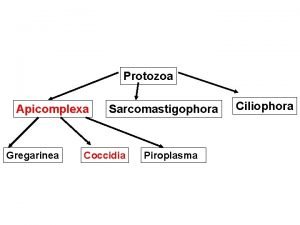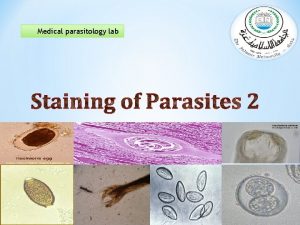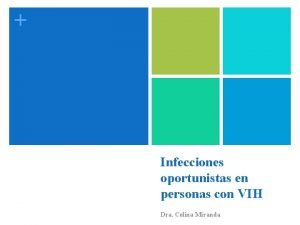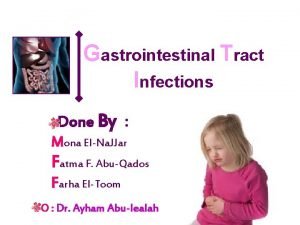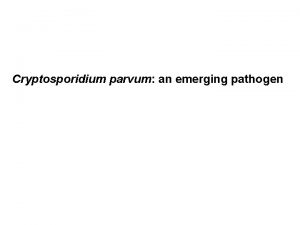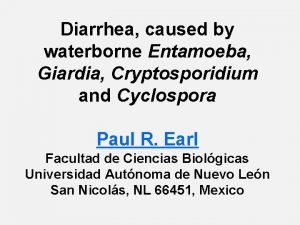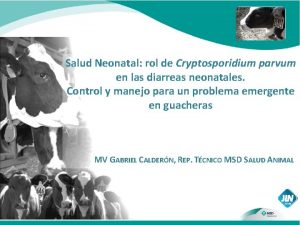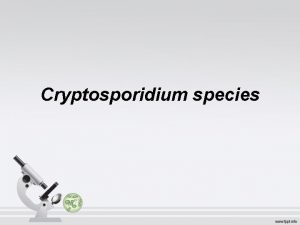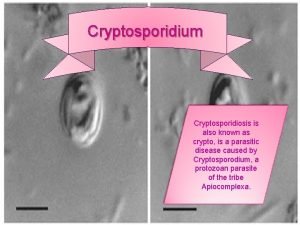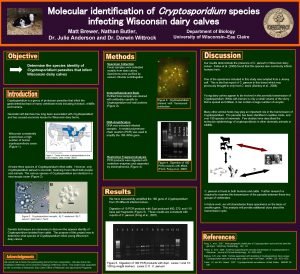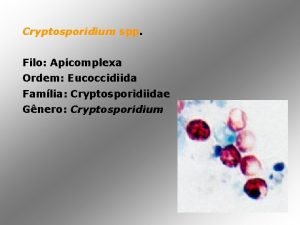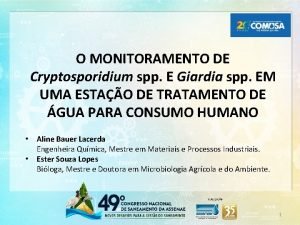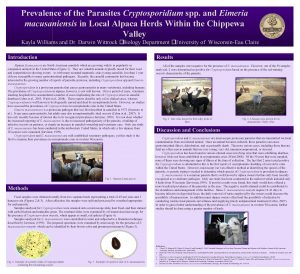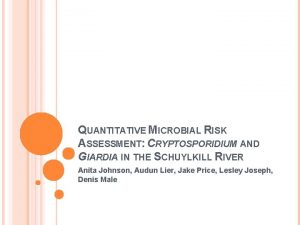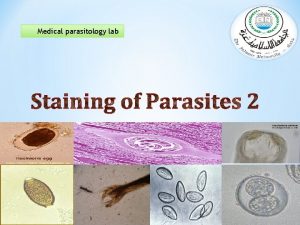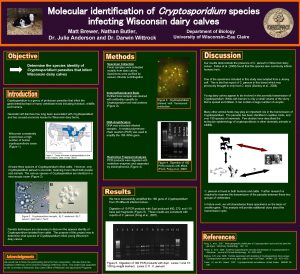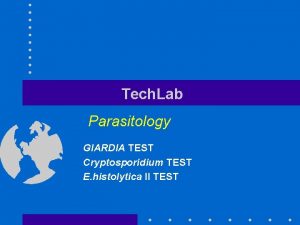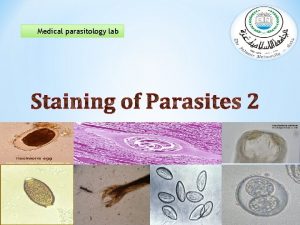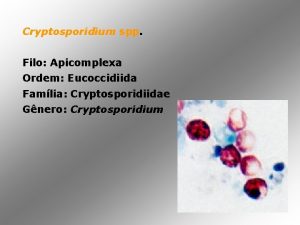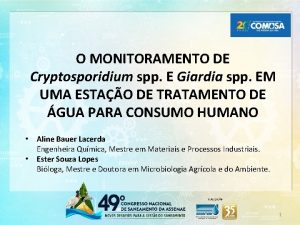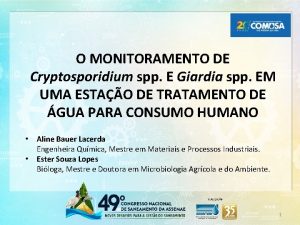CRYPTOSPORIDIUM SP What is it Cryptosporidium is an























- Slides: 23

CRYPTOSPORIDIUM SP

What is it? Cryptosporidium is an emerging coccidian protozoan parasite It is associated with municipal water supplies which causes diarrhea Cryptosporidium parvum causes the disease Cryptosporidiosis. During the past two decades, Cryptosporidium has become recognized as one of the most common causes of waterborne illness in the United States.

What is it? Definitive Host: Human Reservoir Hosts: kittens, puppies, goats, calves, mice, etc It is a zoonotic disease and can travel from animals to humans, and also from human to human Transmission : fecal oral route food and water Cryptosporidium parvum has been recognized as a human pathogen since 1976.

Prevalence Found in most parts of the world Most prevalent in Asia, Africa, Australia, South America Antibody prevalence in Peru and Venezuela – 64% 32% in Peace Corps workers More prevalent in rural areas of U. S. More animal contact

Outbreak In Milwaukee, WI water contamination from a sewage treatment plant killed 100 people and affected more than 400, 000 in 1993. The parasite that caused the disease was determined to be cryptosporidium.

Infectivity & Life Cycle C. parvum has a low ID 50 (9 -1000 oocysts) Can be infected by just one oocyst 10 billion oocysts per gram infected feces

http: //www. dpd. cdc. gov/dpdx/HTML/Cryptosporidiosis. htm

Oocyst Double walled, 4 -6µm � Resistant to chlorine, drying, progressive freezing, salt water Only stage in life cycle that can live ex vivo Imbeds itself in gut epithelium and releases sporozoites Reproduction continues sexually and asexually Mature oocyst contain 4 sporozoites within

Site of infection Epithelial cells of the gastrointestinal tract Has affected other tissues such as respiratory tract tissues and conjunctiva of the eye. Cell death is a direct result of parasite invasion, multiplication, and extrusion or Cell damage could occur through T cell-mediated inflammation, producing microvilli death and Cryptosporidium excess growth

A scanning electron micrograph of Cryptosporidium lining the intestinal tract. (From: Gardiner et al. , 1988, An Atlas of Protozoan Parasites in Animal Tissues, USDA Agriculture Handbook No. 651. )

A scanning electron micrograph of a broken meront of Cryptosporidium showing the merozoites within. (From: Gardiner et al. , 1988, An Atlas of Protozon Parasites in Animal Tissues, USDA Agriculture Handbook No. 651. )

Symptoms � Some individuals can be asymptomatic � Incubation period: 2 -10 days � Symptoms include: � Stomach cramps, pain, watery diarrhea, dehydration, weight loss, vomiting, fever. � Immuno-competent individuals: 1 -2 weeks � Immuno-compromised individuals: longer (months, even years!) � Patients excreting at least 2 -25 liters of watery diarrhea per day life threatening!

LAB DIAGNOSIS Microscopic exam � Modified acid fast stain of stool sample � Endoscopic biopsy of small intestine

Cryptosporidium oocysts with acid-fast stain

Cryptosporidium oocysts with acid-fast stain

LAB DIAGNOSIS Immunodiagnosis � � Immunofluorescence assay (IFA) Enzyme linked immunoabsorbant assay (ELISA) Polymerase Chain Reaction (PCR) � Test of choice

LAB DIAGNOSIS

Treatment No effective therapy, currently researching for a suitable prophylactic drug. � Immuno-competent individuals will recover with fluid and electrolyte replacement. � Nitazoxande � For for treatment of diarrhea. individuals with AIDS, anti-retroviral therapy will reduce oocyst excretion and decreases diarrhea.

Control Methods � Water purification and filtration � Routine testing � Use of 1 micron filter to remove cysts � Boil water � Drink bottled water when traveling abroad � Educate public � Wash hands frequently � Avoid fecal matter during sexual activity


INTERESTING FACT There were 6 outbreaks between 1984 and 1994 in the US. Cryptosporidium is resistant to chlorine. � Not protected in chlorinated pool. In MO there were 26 confirmed cases from motel pools in 1994.

INTERESTING FACT Cattle alone produce about 4. 57 tons of Cryptosporidium oocysts per year in the US BEWARE !

